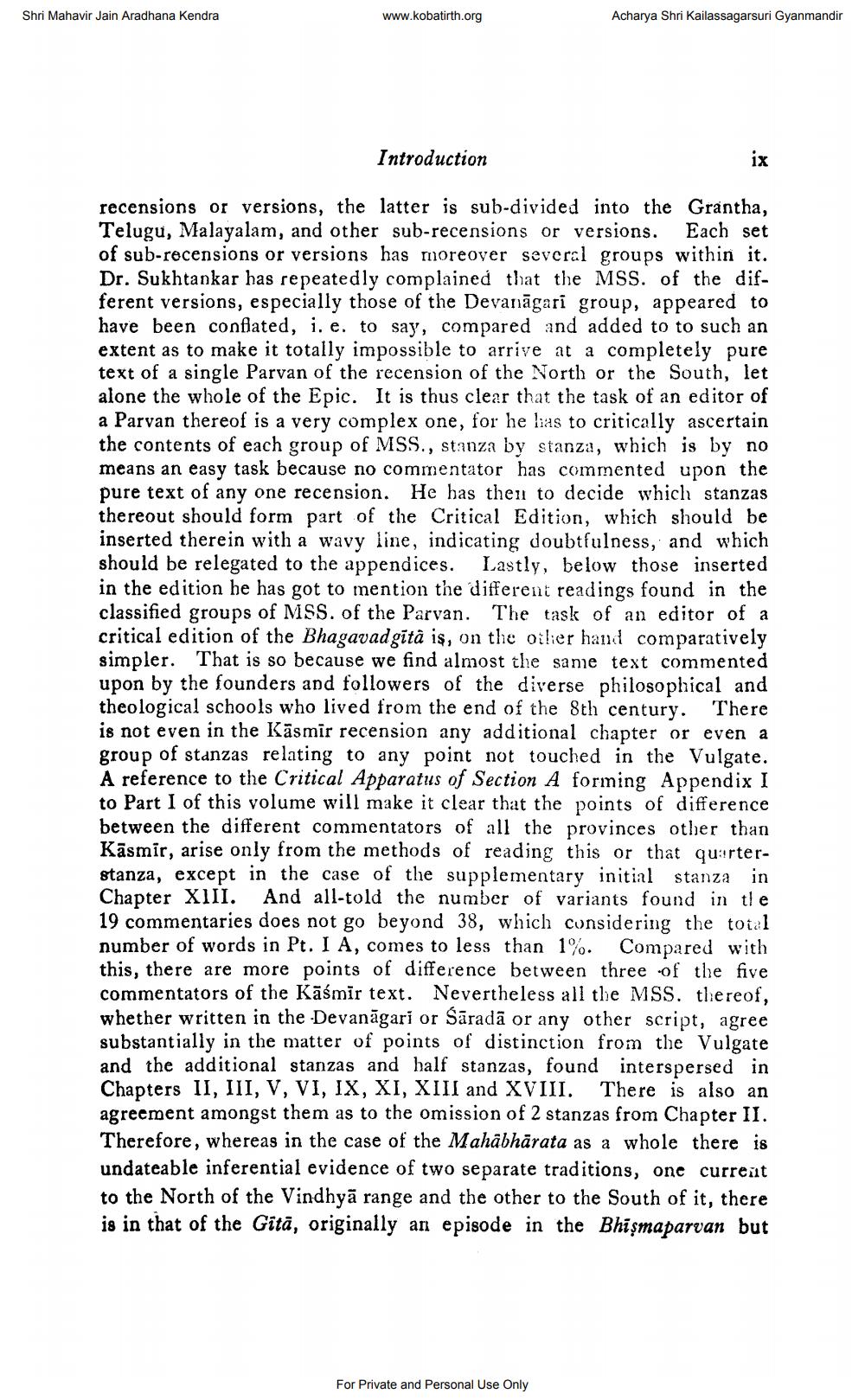________________
Shri Mahavir Jain Aradhana Kendra
www.kobatirth.org
Acharya Shri Kailassagarsuri Gyanmandir
Introduction
ix
recensions or versions, the latter is sub-divided into the Grantha, Telugu, Malayalam, and other sub-recensions or versions. Each set of sub-recensions or versions has moreover several groups within it. Dr. Sukhtankar has repeatedly complained that the MSS. of the different versions, especially those of the Devanāgari group, appeared to have been confiated, i. e. to say, compared and added to to such an extent as to make it totally impossible to arrive at a completely pure text of a single Parvan of the recension of the North or the South, let alone the whole of the Epic. It is thus clear that the task of an editor of a Parvan thereof is a very complex one, for he has to critically ascertain the contents of each group of MSS., stanza by stanza, which is by no means an easy task because no commentator has commented upon the pure text of any one recension. He has then to decide which stanzas thereout should form part of the Critical Edition, which should be inserted therein with a wavy line, indicating doubtfulness, and which should be relegated to the appendices. Lastly, below those inserted in the edition he has got to mention the different readings found in the classified groups of MSS. of the Parvan. The task of an editor of a critical edition of the Bhagavad gita is, on the oilier hand comparatively simpler. That is so because we find almost the same text commented upon by the founders and followers of the diverse philosophical and theological schools who lived from the end of the 8th century. There is not even in the Kāsmir recension any additional chapter or even a group of stanzas relating to any point not touched in the Vulgate. A reference to the Critical Apparatus of Section A forming Appendix I to Part I of this volume will make it clear that the points of difference between the different commentators of all the provinces other than Kāsmir, arise only from the methods of reading this or that quarterstanza, except in the case of the supplementary initial stanza in Chapter XIII. And all-told the number of variants found in the 19 commentaries does not go beyond 38, which considering the total number of words in Pt. IA, comes to less than 1%. Compared with this, there are more points of difference between three of the five commentators of the Kāśmir text. Nevertheless all the MSS. thereof, whether written in the Devanāgari or Sāradā or any other script, agree substantially in the matter of points of distinction from the Vulgate and the additional stanzas and half stanzas, found interspersed in Chapters II, III, V, VI, IX, XI, XIII and XVIII. There is also an agreement amongst them as to the omission of 2 stanzas from Chapter II. Therefore, whereas in the case of the Mahābhārata as a whole there is undateable inferential evidence of two separate traditions, one current to the North of the Vindhyā range and the other to the South of it, there is in that of the Gitā, originally an episode in the Bhişmaparvan but
For Private and Personal Use Only




